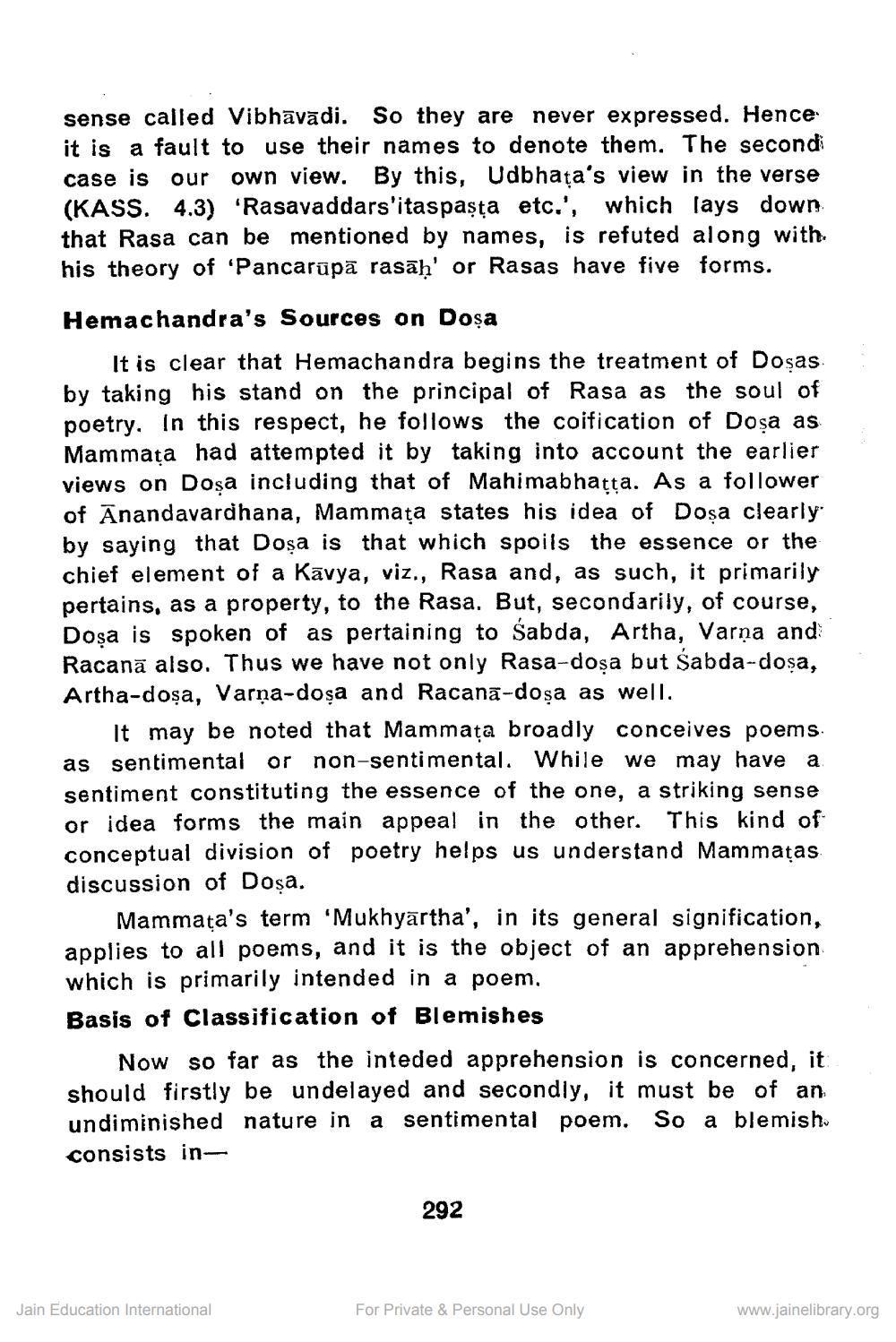________________
sense called Vibhāvādi. So they are never expressed. Hence: it is a fault to use their names to denote them. The secondi case is our own view. By this, Udbhata's view in the verse (KASS. 4.3) 'Rasavaddarslitaspasta etc.', which lays down that Rasa can be mentioned by names, is refuted along with his theory of 'Pancarūpā rasāḥ' or Rasas have five forms.
Hemachandra's Sources on Dosa
It is clear that Hemachandra begins the treatment of Dosas. by taking his stand on the principal of Rasa as the soul of poetry. In this respect, he follows the coification of Dosa as Mammața had attempted it by taking into account the earlier views on Dosa including that of Mahimabhatta. As a follower of Anandavardhana, Mammața states his idea of Doșa clearly by saying that Doşa is that which spoils the essence or the chief element of a Kāvya, viz., Rasa and, as such, it primarily pertains, as a property, to the Rasa. But, secondarily, of course, Doşa is spoken of as pertaining to Sabda, Artha, Varna and Racanā also. Thus we have not only Rasa-dosa but Sabda-dosa, Artha-dosa, Varņa-dosa and Racana-dosa as well.
It may be noted that Mammața broadly conceives poems. as sentimental or non-sentimental. While we may have a sentiment constituting the essence of the one. a striking sense or idea forms the main appeal in the other. This kind of conceptual division of poetry helps us understand Mammațas. discussion of Dosa.
Mammata's term 'Mukhyārtha', in its general signification, applies to all poems, and it is the object of an apprehension which is primarily intended in a poem, Basis of Classification of Blemishes
Now so far as the inteded apprehension is concerned, it should firstly be undelayed and secondly, it must be of an undiminished nature in a sentimental poem. So a blemish. consists in
292
Jain Education International
For Private & Personal Use Only
www.jainelibrary.org




